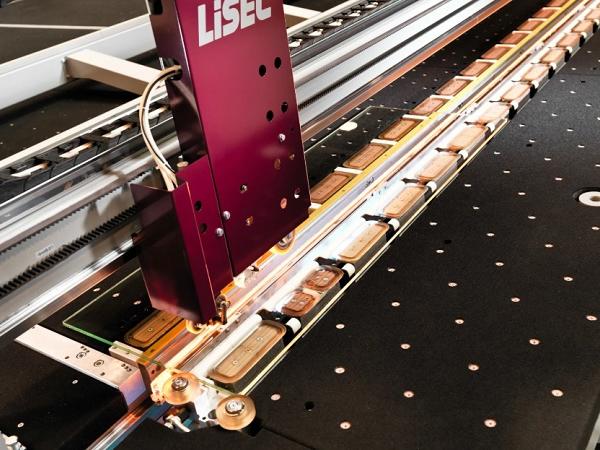
Date: 12 August 2020
Within the framework of the LiSEC LONGLiFE program you can also equip older cutting machines with this innovation and thereby reduce costs.
LiSEC systems are built to last for many years. By replacing components and implementing targeted upgrades, you can extend the life cycle of LiSEC machines even further. Within the framework of the LiSEC LONGLiFE program it is also possible to utilise new developments: For this purpose, LiSEC equips your older system with the desired innovations.
The new suction cup mechanism, which LiSEC has been using for its series machines since 2013, reduces the number of faulty breakages. This automatically reduces the volume of waste and your system downtimes. By replacing the suction cup mechanism, you therefore save considerable costs.
You can also use the new suction cup mechanism if your LiSEC laminated glass cutting machine is significantly older. The upgrade is available within the framework of the LiSEC LONGLiFE program for systems built by LiSEC between 2005 and 2013. The modification itself requires very little effort.
THE CONVENTIONAL SUCTION CUP MECHANISM DOES NOT TAKE GLASS SHEET DISTORTIONS INTO ACCOUNT
Exactly how the modern suction cup mechanism from LiSEC reduces the quantity of faulty breakages becomes clear when it is compared with solutions used to date. The suction cup mechanism consists of two rods with several suction pads. These hold the glass sheet in place during the breaking and separating process. With conventional solutions, the 34 to 58 suction pads are aligned precisely level to secure workpieces with a smooth surface.
A laminated glass sheet is not precisely the same thickness at every point to within a fraction of a millimetre. The workpiece therefore exhibits distortions that have consequences during further processing: When securing the glass sheet, the suction pads act with different forces because the distance between the suction pad and the glass sheet before the suction process is not identical due to this unevenness. During this procedure, the workpiece is literally pulled straight. This increases the existing stresses in the laminated glass. This can lead to breakage during the breaking and separating process.
FLEXIBLY MOUNTED SUCTION PADS AVOID ADDITIONAL STRESSES IN THE GLASS
The new suction cup mechanism from LiSEC adjusts to the individual distortions in each individual glass sheet. The individual suction pads are not fixed, but instead exhibit mechanical play of one millimetre. Each individual suction pad can move within the tolerance range and therefore secure the workpiece with the same force. The suction pads, which are flexibly mounted in one direction, allow height compensation of one millimetre when suctioning the sheet.
This tolerance prevents glass sheets with uneven surfaces from being pulled straight, thereby increasing existing stresses. The result is fewer faulty breakages during the breaking and separating process. This reduces cutting machine waste and downtimes, and therefore also costs.
The glass cutting machine can be upgraded in just a few days
On request you will receive a tailored quotation for your system. The LiSEC service technicians require two to four days for the modification itself. Upgrading your glass cutting machine within the framework of the LiSEC LONGLiFE program includes the following services:
- Replacement of the cross-bolts for each individual suction cup. Using spacers, the LiSEC service technician carries out fine adjustment of the height level.
- Setting all suction cups to the defined starting level
- Inspection, adjustment and optimisation of the machine and recipe parameters
The LiSEC service technician leaves the suction cups and the other mechanisms in their original condition. This means there is no requirement for new parts. During the modification itself, the LiSEC service technician works very intensively with the mechanisms of your system. The technician will draw your attention to any components exhibiting a high degree of wear and tear, or to any imminent malfunctions detected.
CONCLUSION: LISEC LONGLIFE: HOW THE MODERN SUCTION CUP MECHANISM REDUCES FAULTY BREAKAGES
Laminated glass is a material that frequently exhibits distortions. Faulty breakages during further processing must therefore be taken into account. The modern suction cup mechanism means it possible to secure each individual workpiece, whilst also taking into account the individual surface condition.
This allows you to drastically reduce the number of faulty breakages in your production. Very few new parts are installed during the modification, and the effort required is correspondingly low. At the same time, service technicians from LiSEC will spend several days working on your system and will detect worn parts or imminent malfunctions that you would not have otherwise noticed.
Claudia Guschlbauer
 600450
600450























Add new comment